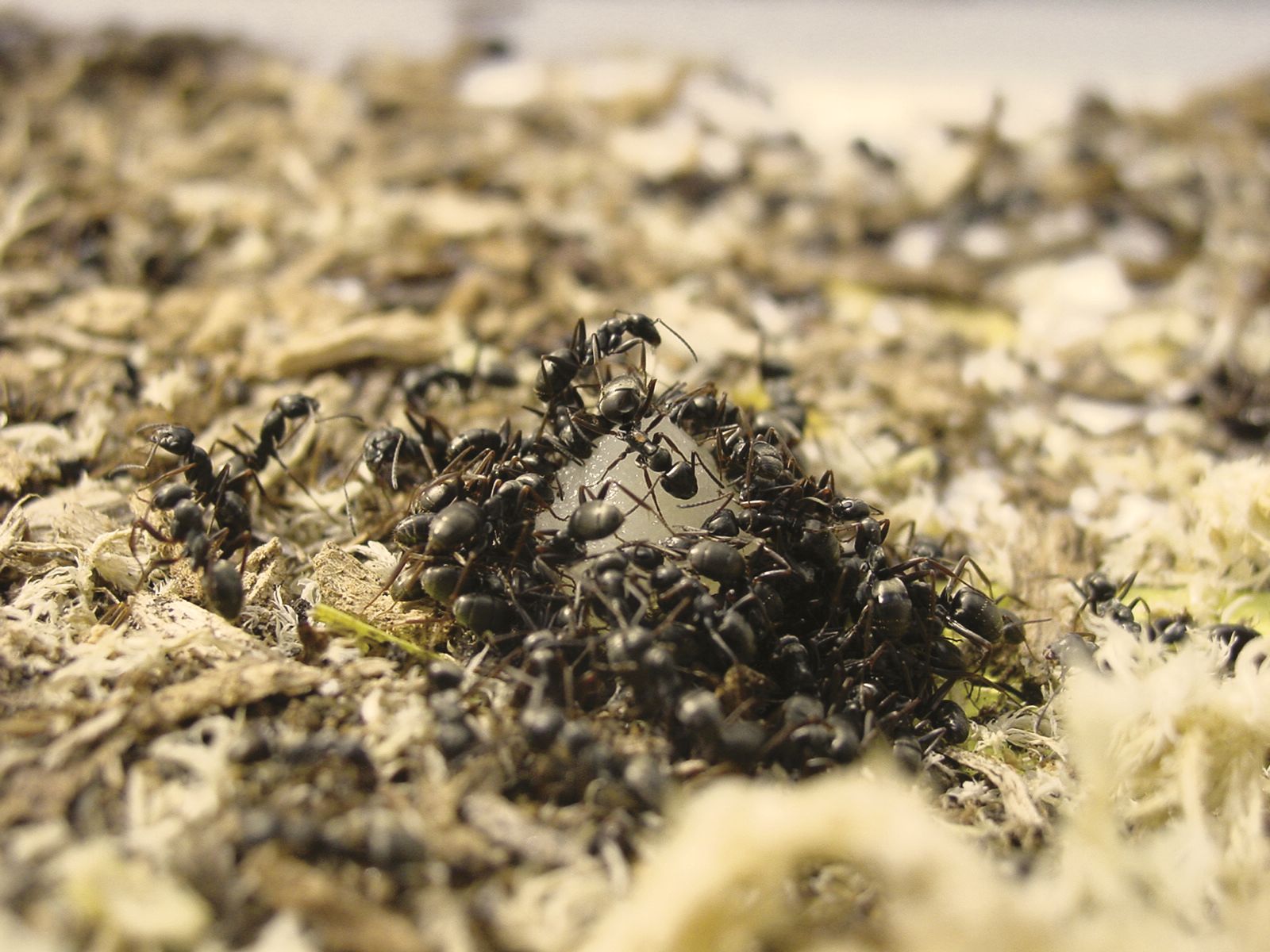- Formica fusca
Taxobox
name =

image_width = 275px
image_caption = "Formica fusca" workers feeding
regnum =Animal ia
phylum =Arthropod a
classis =Insect a
ordo =Hymenoptera
familia = Formicidae
genus = "Formica "
species = "F. fusca"
binomial = "Formica fusca"
binomial_authority = L., 1758"Formica fusca", the common black
ant ofEurope , is apalaearctic ant with a range extending fromPortugal in the east toJapan in the west and fromItaly in the south toFennoscandia in the north. "F. fusca" nests are usually found in rotten tree stumps or under stones in clearcut areas and along woodland borders and hedgerows.Colonies are facultatively polygynous (though weakly so); though the queens coexist amicably, contribution to the brood tends to be unequal. Nests are usually small, containing 500-2,000 workers. The workers are large (8-10 mm) and fast moving, though timid. "F. fusca" feeds on small insects,
aphid honeydew and extra floralnectar ies. Alate (winged) forms are produced in June/July and nuptial flights are in July/August.A recent study (Hannonen & Sundström 2003) has found evidence of
nepotism in "F. fusca", in contrast with previous experiments with other ant species (Snyder 1993); this conclusion has been challenged, however, on the grounds that the observed pattern may result from differences in egg viability (Fournier "et al." 2004).References
* Collingwood CA (1979) The Formicidae (Hymenoptera) of Fennoscandia and Denmark. Fauna Entomologica Scandinavica, Vol. 8, Scandinavian Science Press, Klampenborg, Denmark.
* Czechowski, W., Radchenko, A. & Czechowska, W. (2002) The Ants (Hymenoptera, Formicidae) of Poland (Museum and Institute of Zoology, Polish Academy of Sciences, Warsaw)
* Fournier, D., Aron, S. & Keller, L. (2004) Significant reproductive skew in the facultatively polygynous ant Pheidole pallidula. Molecular Ecology, 13:203-210.
* Hannonen, M. and Sundström, L. (2003) Worker nepotism among polygynous ants. Nature, 421:910.
* Snyder, L. (1993) Non-random behavioural interactions among genetic subgroups in a polygynous ant. Animal Behavior, 46:431-439.
Wikimedia Foundation. 2010.
